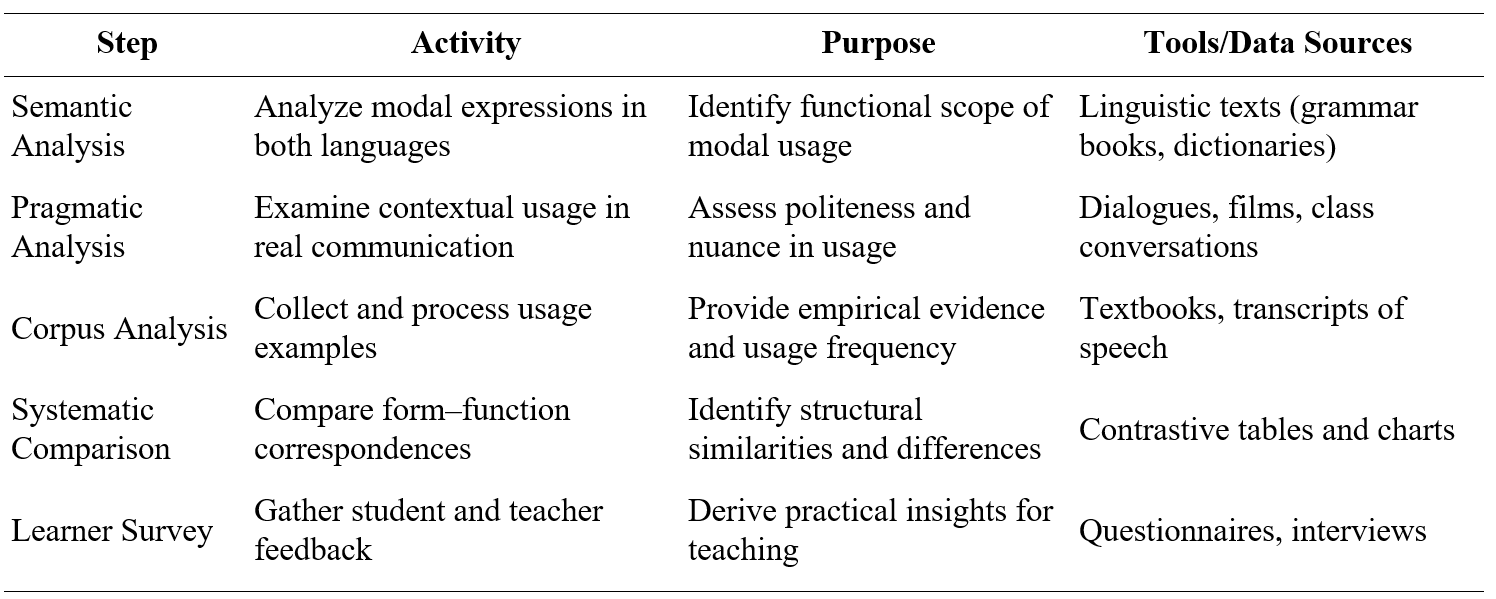A Comparative Study on the Semantic Similarities and Differences Between Chinese Modal Verbs and Korean Modal Constructions in Daily Communication
Abstract
This study employs a mixed-method contrastive analysis to investigate the semantic similarities and differences between Chinese modal verbs and Korean modal constructions in everyday communication. Modal structures in both languages are categorized by their function (ability, obligation, desire) and systematically compared using corpus data, contextual examples, and learner feedback. Key findings highlight that while Chinese and Korean share these basic modal categories, they differ in structural expression (Chinese uses invariant modal verbs whereas Korean uses inflected modal constructions) and in pragmatic usage (Korean encodes politeness levels overtly, whereas Chinese relies more on context). These differences often pose challenges for learners, as evidenced by a survey and interviews, underscoring the need for explicit contrastive teaching. The study proposes pedagogical strategies for bilingual education to address these issues and improve learners’ accuracy and intercultural communicative competence.
Downloads
References
Ch, Y. K. (2020). Pedagogical implications of Korean modal constructions for multilingual learners. Language Education Research, 15(1), 22–39.
Han, S. J. (2014). A pragmatic comparison of modality in Korean and Chinese conversations. Journal of Comparative Linguistics, 9(2), 33–52.
Kim, H. J. (2013). Modality in Korean and its pedagogical implications. Korean Linguistics Journal, 21(3), 45–67.
Lado, R. (1957). Linguistics across cultures: Applied linguistics for language teachers. University of Michigan Press.
Lee, I., & Ramsey, S. R. (2000). The Korean language. SUNY Press. https://doi.org/10.2307/jj.18252470
Lu, J. (2011). Chinese modality verbs. Beijing University Press.
Lyons, J. (1977). Semantics. Cambridge University Press. https://doi.org/10.1017/CBO9780511620614
Palmer, F. R. (1990). Modality and the English modals. Longman.
Song, J. J. (2005). The Korean language: Structure, use and context. Routledge. https://doi.org/10.4324/9780203390825
Wang, L. (2018). Contrastive analysis of modal verbs in Chinese and Korean: A functional perspective. Modern Foreign Languages, 41(3), 98–112.
Zhang, Y. (2016). Comparative study on modality verbs between Chinese and Korean. Language Teaching and Linguistic Studies, 12(4), 88–95.


This work is licensed under a Creative Commons Attribution 4.0 International License.
Copyright for this article is retained by the author(s), with first publication rights granted to the journal.
This is an open-access article distributed under the terms and conditions of the Creative Commons Attribution license (http://creativecommons.org/licenses/by/4.0/).









1.png)









1.png)











